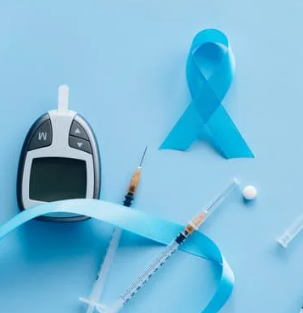In Part One of the blog series, I reviewed CKD statistics and associated costs and began to touch on opportunities to identify those at substantial risk or those who could have damage to their kidneys already. With that background, we can explore ways Azara’s solutions can expand engagement with this patient population to better manage their chronic conditions and improve their overall health.
Performing Outreach to Identify CKD Populations
Azara Patient Outreach (APO) helps healthcare organizations improve patient care and close care gaps by enabling them to conduct targeted outreach campaigns utilizing patient information already contained and curated within Azara DRVS. Azara has created two APO campaigns (CKD Screening for DM Patients and CKD Screening for HTN Patients) related to patients with chronic disease—targeting patients diagnosed with diabetes or hypertension who have not had a kidney profile within the designated campaign lookback period.
Patients with a completed "kidney profile" are determined by looking at the most recent estimated glomerular filtration rate (eGFR) and urine albumin-creatinine ratio (UACR) results. Those results combine to classify patients as ranging from low to highest risk for progression, morbidity, and mortality according to standards set by The National Kidney Foundation and the American Society of Clinical Pathology. By targeting the population of patients with a diagnosis of diabetes and/or hypertension, organizations utilizing APO can begin to determine the kidney function of high-risk patients and proactively identify those who could be in the early, mid, or even late stages of CKD.
In addition to capturing data in lab tests to help identify patients with CKD, there are also ways to determine the campaigns' impact. Practices can use the APO Campaign Performance Report to identify enrollees who have had care gaps closed during the campaign, along with the number of successfully reached patients.

When looking at CKD Screening campaigns, we can focus on the reached population for whom we now have kidney profile data on file to determine the effectiveness of the campaign. Having this level of detail can be extremely beneficial to be able to tell a story of identifying patients with chronic diseases and how their kidneys are functioning. Combining all these details with the ability to filter by a period or practice helps managing these patients become a bit easier.
Managing and Coordinating Care of the Identified CKD Population
While APO campaigns are a fantastic way to identify patients who already have been diagnosed with chronic diseases and might also have undiagnosed CKD, registries are another tool within DRVS that can assist in managing this population. By using registry data elements (RDEs) specifically for chronic kidney disease, identifying and managing this population becomes a bit less difficult. RDEs can create lists of patients based on inclusion criteria to target chronic disease patients with a kidney profile demonstrating an increased risk of kidney disease.

By taking this population and adding them to a cohort, the management of their care can seamlessly transition from data in DRVS reporting to Azara Care Connect (ACC), Azara’s care management and care coordination application, to begin working with the patient to manage their care. ACC leverages the full set of clinical, claims, HIE, and practice management data in Azara DRVS and makes it available in a simple and intuitive user interface to conduct care management and care coordination activities. The treatments for kidney disease focus on the management of a patient’s health—empowering care teams to focus on assisting this patient population to improve outcomes and slow disease progression.
Azara Care Connect provides users the ability to continue documenting the care items that are most important to this population. With updates to Azara’s EHR plug-in, actionable patient insights can be accessed whether in the patient’s chart in a practice’s EHR or within ACC’s dedicated solution—providing quick and easy access to a patient’s data in addition to information and tools housed within DRVS. As a patient’s care progresses, care plan documentation can be a source of truth to help keep the patient informed of their plan and ideally begin seeing improvements in their overall health, all while having a greater understanding of kidney disease and what may be expected in the future.

Conclusion
Identifying elevated risk of CKD populations to target for care management can be challenging, and a lack of patient information can lead to difficulties in identifying those who could truly benefit. By leveraging Azara solutions, such as Azara Patient Outreach and Azara Care Connect, users can identify those who may be at higher risk for CKD and begin outreach to complete the necessary lab tests required to provide evidence for the need to manage and coordinate care. As the cost of kidney disease treatments increases, the population of at-risk patients who begin to better manage their health could see disease progression slow—all while feeling more activated and involved in their care and choices regarding nutrition, exercise, and management of their condition.
If your organization is leveraging Azara solutions to assist those living with CKD or at high risk, we’d love to hear from you. If you’d like to learn more about how Azara can help identify this population and manage their chronic diseases, please contact your client success manager or email solutions@azarahealthcare.com.
Related Articles

Value-Based Care Foundations Part 2: A New Chapter in Risk Adjustment
Explore Insights
Socioeconomic Status, Access, and Control: Rethinking Diabetes Outcomes
Explore Insights
